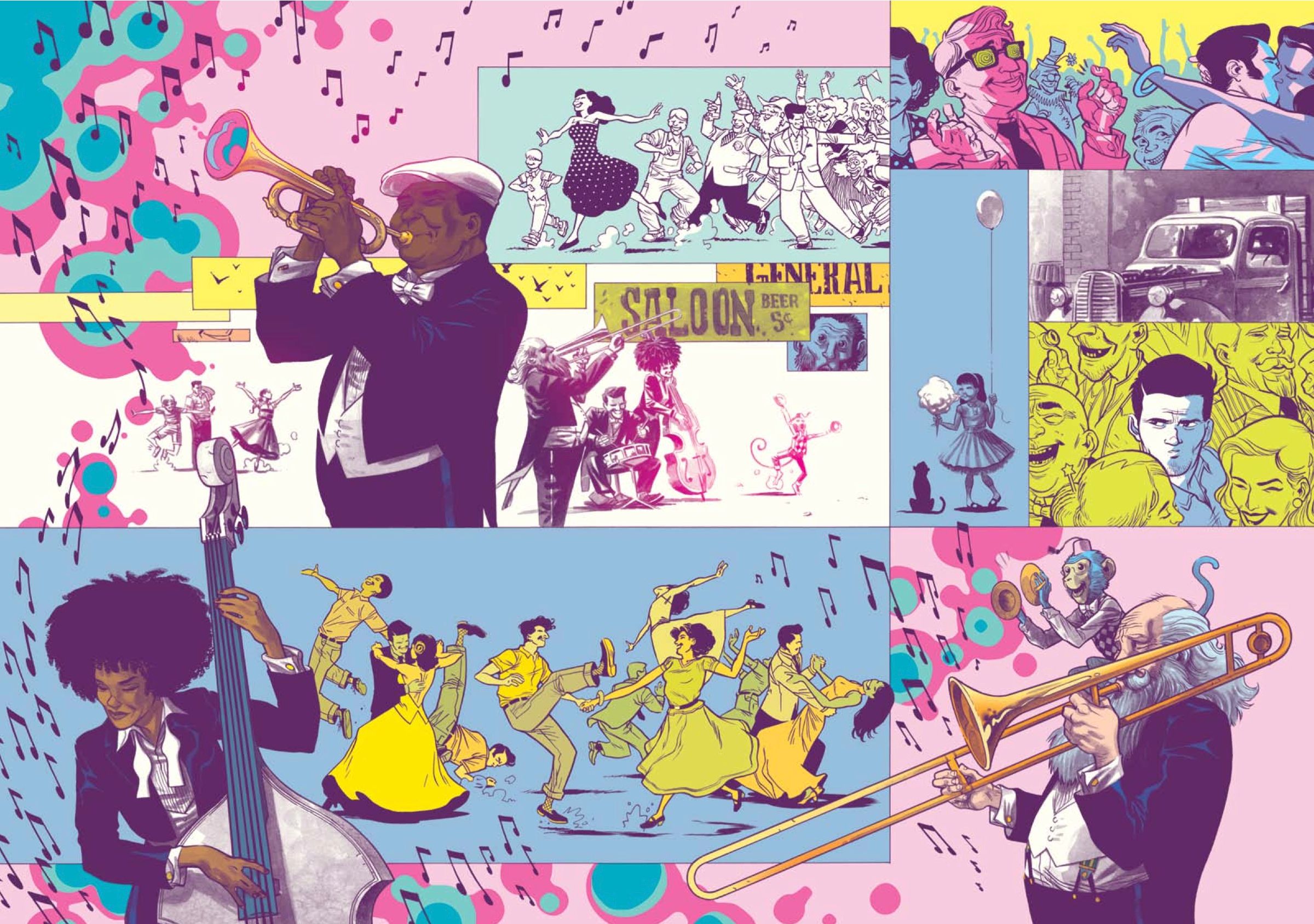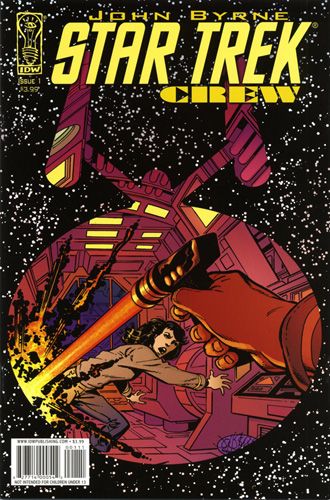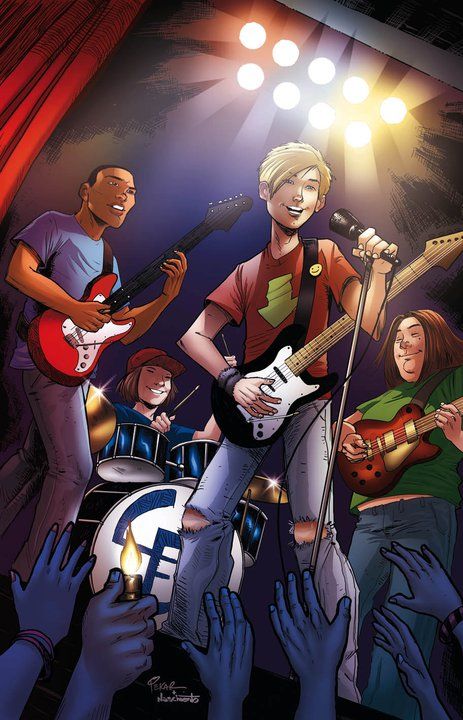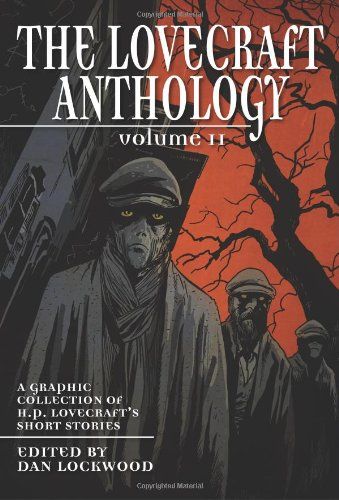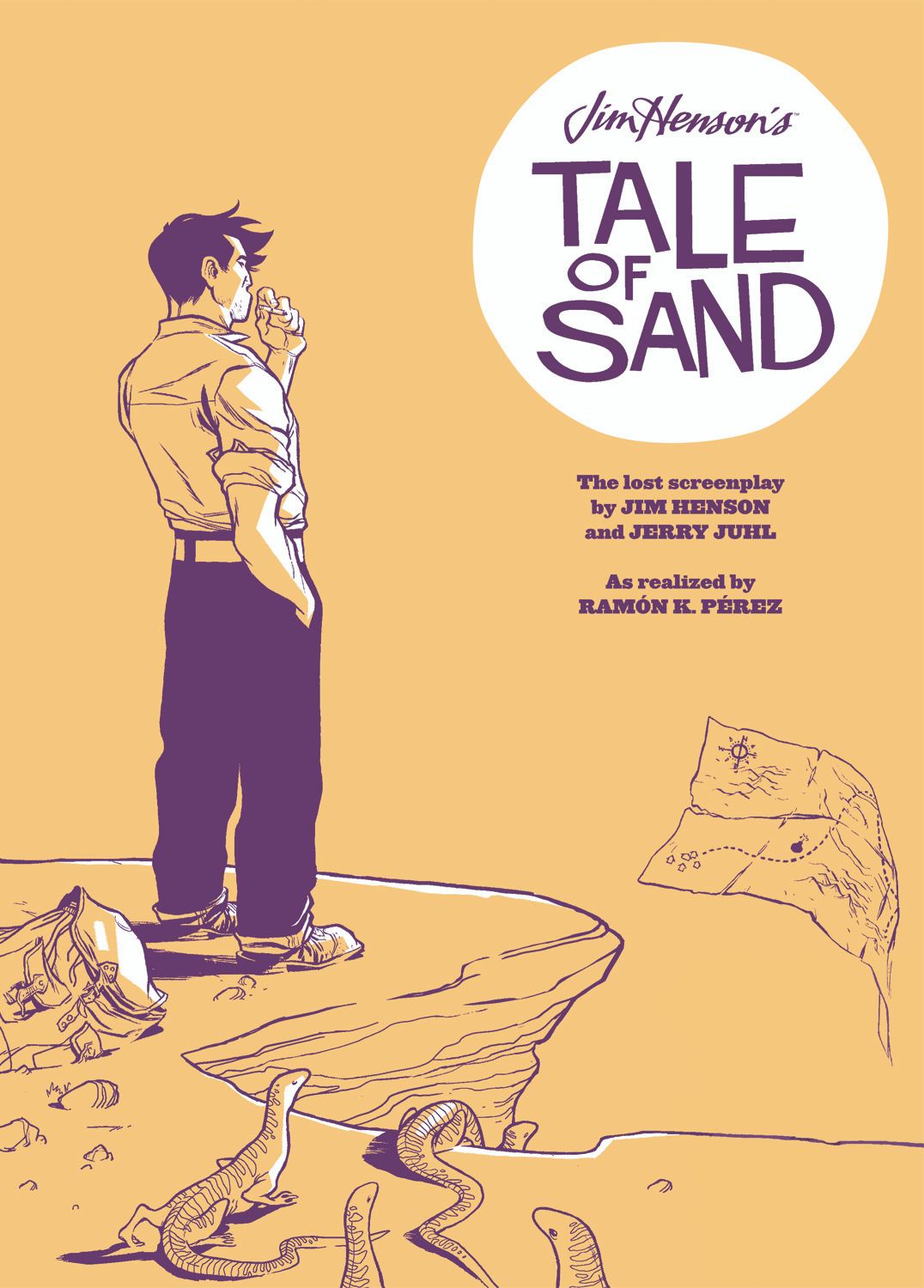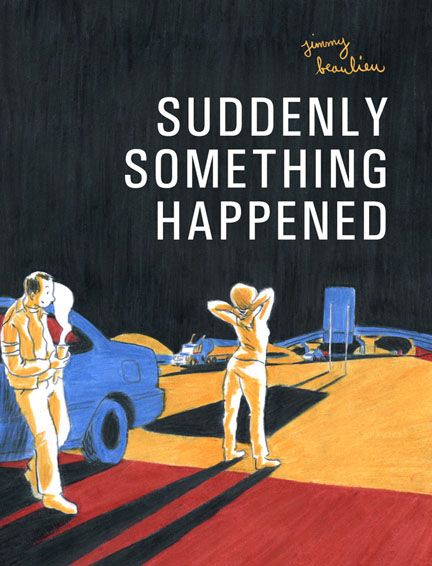Hello and welcome to What Are You Reading? Today our guest is Salgood Sam, who has just relaunched his independent personal anthology series Revolver. He is also completing the last chapter of a graphic novel called Dream Life after a successful Indiegogo funding drive to finance it. He also publishes the Canadian-centric comics blog Sequential. As he told me, he "usually has too many projects going on and does not get enough sleep."
To see what Salgood Sam and the Robot 6 crew have been reading, click below ...
*****
Mark Kardwell
This week I've mainly been making my way through Michael Chabon's latest, Telegraph Avenue, which isn't technically a comic. Sorry.
I'd also like to add my voice to the clamor of approval for the big twist in 2000AD prog 1807, an instant classic. Fantastic work from all involved, it's seldom that a Dredd strip delights so thoroughly without John Wagner's presence. Al Ewing, Si Spurrier and Rob Williams coordinated their strips to gel into a fast, thrilling build of revelations. And Rob Williams' Dirty Frank remains the most loveable character in Dredd's universe since Tweak.
And just to show that blogging about comics sometimes works, I bought Krent Able's Big Book Of Mischief because of Richard Bruton's review of it. Haven't read it yet, but it looks great.
Tom Bondurant
Since the arc-concluding issue #6 came out last week, I read all of Garth Ennis and Aaron Campbell's first Shadow storyline in one big chunk. It was entertaining in a very black, horrifying kind of way; but entertaining nonetheless. As someone whose last regular exposure to the character was 25 years ago (first with the just-reprinted Howard Chaykin miniseries, and then with the Andy Helfer/Bill Sienkiewicz/Kyle Baker ongoing), plus various bits of the Alec Baldwin movie, I come to the Shadow with very general impressions. Basically, Ennis here seems to be using a bit of Spectre-style righteous, omnipotent wrath, since his Shadow can see enough of the future to make coldly blunt assertions about the mortal characters. The other part of his Shadow is a hypercompetence that Grant Morrison's Batman would envy. However, since this tale pits the Shadow (and Margo Lane, not quite along for the ride, but there mostly to gape aghast) against various Axis-aligned sociopaths, after a while you start gauging how brutally the bad guys will die by how much they boast beforehand. Again, I liked this storyline a lot, and I am waiting eagerly for issue #7. Campbell has a fine design sense, not unlike Michael Lark and Steve Epting, which is well-suited for the Depression-era style, and the whole thing just rolls along, carried by the force of its lead's personality.
In recent years I have soured somewhat on John Byrne, so as big a Trekkie as I am, I was reluctant to pick up much of his Star Trek work. However, a while back I read and enjoyed Crew, which looked at the early career of Pike's first officer Number One, so -- and this is the truly nerdy part -- I wanted to get Leonard McCoy, Frontier Doctor in large part to see what Byrne would do with the three years between the end of the Original Series and The Motion Picture. Taken in installments, it's not a bad miniseries, but as a singular story it doesn't quite gel. From TMP we know two things about McCoy's life in this period: he left Starfleet (apparently to practice on the fringes of the Federation) and he swore he'd never return (causing Kirk and Adm. Nogura to "draft" him). That might have been too predictable for Byrne, and that's fine -- but there's little indication that McCoy has any beef with Starfleet, and you'd think that would be somewhat central to his characterization. Moreover, midway through the book Byrne up-ends the status quo he's established by bringing in two sets of familiar Trek characters; and after those stories are over the miniseries just sort of ends. Again, it's fun in parts, and the individual stories aren't bad on their own merits, but it seems like there was a better story floating around the margins.
And speaking of characters coming in out of nowhere, this week's Winter Soldier #12 (written by Ed Brubaker, pencilled by Butch Guice, inked by Brian Theis, colored by Bertie Breitweiser) reveals the villain's real target, and it's ... him? Really? Because the issue begins with Bucky vs. Wolverine, and any Wolverine guest-shot comes with the rebuttable presumption that Wolverine is just there to add credibility to whomever he's fighting, I suppose there's a certain theme of "Bucky fights his way to the top of the MU," but still -- him? Considering that Brubaker has been working overtime to convince the reader that the Black Widow might not actually come back to the good side, it strains credibility even further to think that Bucky will do serious harm to his Mystery Date. Still, I can't complain about the mechanics of the issue, because this team sure produces a well-run comic.
Brigid Alverson
Howard Shapiro's The Stereotypical Freaks suffers from some first-graphic-novel missteps, like too much expository dialogue, but the story shines through all that and I'm not ashamed to admit that the final chapter made me cry. It's a high-school battle-of-the-bands story featuring four kids--the brain, the nerd, the jock, and the exchange student. This story goes way beyond those stock characters, however (the title of the book is the name of the band, a deliberate jab by the kids themselves), and Shapiro throws in a twist halfway through that changes everything. The further I got into the book, the more I liked it, and the more I saw the characters acting in real, human ways, rather than the way adults think teens should act. It's unsparing, clear-eyed, funny, and sad. I absolutely love the art, by Joe Pekar and Ed Brisson. They use a simple but expressive line that conveys solidity, depth, and action with no fuss whatsoever.
I reread Jeremy Whitley's Princeless over the weekend, and I liked it even more the second time around. There are plenty of fairy tale spoofs, but Whitley combines a wicked sense of humor with some really fun characters--an independent-minded princess who is locked in a tower to await the knight who can slay the dragon that guards her. Only this princess isn't going to wait around; she points out to the dragon that a job that ends in death is a bad gig, and the two of them take off in search of her other sisters, who are also locked in towers--all but the youngest. Humorous complications ensue. The story has plenty of kid appeal--humor, action, well drawn characters--but the witty dialogue makes it a fun read for adults too. The second volume is due out soon, and I'm looking forward to seeing what happens next.
Chris Mautner
The Lovecraft Anthology Vol. 2, edited by Dan Lockwood -- I've come to the conclusion that I don't really care much for H.P. Lovecraft. I've tried to read his stories a number of times but constantly get stopped in my tracks by his overwriting and ridiculously purple prose. More to the point, Lovecraft's work is not something that's easily adaptable to comics. His stories rely chiefly on mystery and suggestion in order to create a sense of dread, that the monsters are so horrible that human words can deem them justice -- mere men go mad upon gazing at them. How can any artist hope to translate that visually? Any attempt will come off as lacking, and indeed that's the case with this anthology, a collection of perfunctory and occasionally awkwardly adapted Lovecraft stories, none of which will get the slightest bit of chill from any adult reader, horror fan or otherwise.
Charlie Brown's Christmas Stocking -- This is a little gift book featuring the Peanuts characters, the kind you usually see in Hallmark stores or lurking by the cash register in book stores. The catch here is that the book is made up of two long-lost stories Schulz did for Good Housekeeping in 1963 and Women's Day in 1968. The strips -- if you want to call them that -- are laid out in a one-page gag format, similar to the Happiness is a Warm Puppy series of books. They're cute holiday stories -- the main one focuses on Charlie Brown's attempts to figure out a place to hang his stocking since his home doesn't feature a fireplace -- and will no doubt make a great gift for any Peanuts fan, though they're hardly an essential purchase to anyone that doesn't count themselves among the devoted.
Salgood Sam
Multi-award winning Art and Adaptation by Royal Academy heavyweight Ramón Pérez.
Award winning packaging by Eric Skillman.
Archaia
Ramón’s a friend, and it’s been inspiring to watch him become deservedly highly sought after. It may be laying it on a little thick calling this book one for the ages, but I just did. I will have no choice but to cop to being bias. But I’m confident you will agree.
A year or so ago it was while loitering around the Toronto studio he shares with the rest of the Academy gang that I first saw pages from this rather brazenly epic realization of a reputedly esoteric rich early script, by one of my all time heroes. The Muppet Man. Mr Fraggle. When he said what the spreads he was inking were for, I think I cursed under my breath for an extended period.
You could already see this was a gorgeous project. Leaning over Ramón’s shoulder when he’s working tends to be routinely rewarding, but all the more so in this case.
Reading the book myself this summer finally was an almost-unadulterated pleasure. I was initially thrown by the strange lettering phenomenon associated with old Melrose Mernly [his friends call him Sven]. But after it reoccurred a couple of times I got it, and recognized it for the bit of fun inventive surrealism it is, an echo of Henson's own penchant for psychedelic audio phenomenon.
This book is filled with playful formalistic inventions that for me put it on par with Asterios Polyp and the like. I think many are fairly novel, but despite and often because of it, all still a fabulously smoothly reading, rolling, kinetic comic.
A race meant to take 10 minutes to Eagle Mountain takes a wrong turn into a maylay of chaos.
The large wordless sections can be pored over, but I encourage you to read it all at least once, in only the time it takes to get the story point and move on.
The ease at which you can register what has been drawn narrative wise is remarkable. Storytelling as sharp as you will find here, for a story so surreal is an impressive accomplishment. Ramon makes it look easy. I also happen to know it was completed in an impressively short time, too.
This is a jealousy inducing book. His discipline is always impressive, and it’s on full display here. What it brings to a quite recognizably worthy bit of the Henson legacy is worth every cent and minute.
You must read.
Suddenly Something Happened by Jimmy Beaulieu.
Translated by Kerryann Cochrane
Conundrum Press
Jimmy Beaulieu is the founder of Quebec publishing house Mécanique Générale, and an autobiographical cartoonist with a penchant for romantic angst. This was how I first encountered him.
I think it was at a Comic Jam hosted by Rupert Bottenberg, or a BD festival perhaps. He’s an extremely likable geeky guy who loves pop music, pop art and sexy ladies unabashedly. A fastidious editor and designer and easy maker of many friends.
He and a group of said friends were publishing great inventive self-published B&W comics when I first moved to Montreal. Several were even wordless so I could enjoy them without issue. I really loved checking out their latest stuff, and was always frustrated by my hopelessly poor language skills when it came to reading Jimmy’s auto bio work.
BDANG is a sub imprint of Conundrum Press, a small but prolific Canadian publishing house. Under it publisher and author Andy Brown is translating and publishing several French books
In 2010 one of them was the collection and translation of two of Jimmy’s extended works, Quelques Pelures and Le Moral des Troupes [winner of the 2005 Prix de l'Espoir Québécois], They document his life between the late ‘90s and early ‘00s. Additional pages were added to the collection, and Jimmy played with parts of the text of the second part to try to round out the story and smooth out his sophomore spots.
I’ve read it in fits, it’s got scope! Coming in at an impressive 250 pages of comics.
Jimmy adopted early an easy, fast, light-handed style of art, well-suited to a personal journal comic. It evolves visibly over the body of work, going from pleasantly naive to deceptively skillful. He often apologizes for his drawing, but I find it enjoyably expressive and his girls are adorable! Being so often the subject of his attention, this pays off for an appreciative reader. He captures people's pantomime well. The tones and textures lend themselves to a gauzy soft focused nostalgic story about the coming of age of a shy cartoonist from Quebec City who slowly falls in love with Montreal, and moons over hot cupid-like young mothers and full-figured redheads.
There are many small gems, like one of the short, newer epilogues to act one. An entry titled ‘rocket man’ where Jim shares an internal monologue about waiting for his employer at a book fair in Autumn of 2000. Withdrawing from caffeine and suffering a night of poor sleep, on a day he marks as his 2977th of celibacy! Oh dear. He talks about the city landscape while imagining Mecha Kaiju destroying a Montreal industrial park, then that the underwear models on the billboards are there to distract him from the urban destruction. It’s subtle in execution and quite poignant.
I think one great target audience for this collection would be young adult and romance readers looking for sprawling, ranting, romantic, sometimes silly stories of transplantation. Finding love in lots of the wrong places, but finally one right. Feeling inadequate. Facing death for the first time. Raging over pop culture and ranting about popular culture. And being in love with the making of comics. I also know for a fact at least one American comics editor has confessed to having used this book to seduce a girlfriend.
Jimmy has matured a lot since this early work. You’ll find a lovely recent example of his work in Carré Rouge, a romantic fictional story set around the recent protests in Montreal, published in multiple languages online.
But this early material is still quite charming.
Traumstadtdenken – Comix + Images
Editions Trip
Rupert and I first met at a comics jam in Montreal in the ‘90s when i worked at Marvel and was chafing at constraints. Another cartoonist friend and I were talking during a NY convention, and he gave me a zine of Rupert's, saying I should meet him. This is also when I first heard about Comic Jams, spectacular incarnations of which Rupert hosted in a svengali fashion at the time.
You may have noticed a trend in my book selections? :) Yes, well, it’s what I’ve been reading of late. Catching up on the work of many friends.
The title Traumstadtdenken is a German neologism, meaning “Dream-City-Thinking.” A reference to a painting by Paul Klee, “Traumstadt,” that had a significant impact on Rupert.
The book is a collection of comix, drawings and odds ’n’ ends spanning 10 years stitched together with bits of connective symbolically narrative sequences. It’s informative to know he also paints highly designed abstract art, collects and fabricates pop art sculptures and toys, and recently has been globe-hopping as a founding member of the breakout art collective EN MASSE.
Whatever he is drawing on--in a comic, on a wall or canvas--his rendering is always superbly skilled and highly graphically attractive. This book is filled with perfect cartoony chiaroscuro pages that often invite you to project your own meaning or interpretations. Rupert has always been a fan of wordless art that can be read by anyone. Several sequences here are examples of that. He provides rich symbolic visuals that suggest lots of ideas, and are just really fun to look at. There is no attempt to present an over-arching story here, page numbers are consciously dropped. There are times where narrative is very strong, a story can be found with ease. Is even clearly intended. But where words appear, it’s usually to cloud the issue and add new silly twists to things.
When I first saw his work I fell in love with his lines. We’ve shared an appreciation for improvisational doodling and abstraction. I hope more people can discover his work as I have. This collection is an excellent place to start.
You should also check out his webcomic with author Claude Lalumière, Lost Myths.

